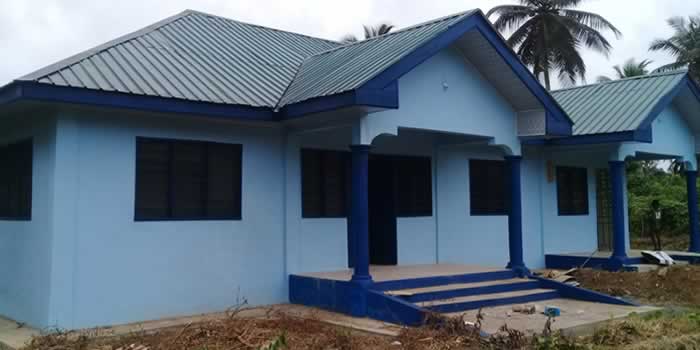

Location and Size
The district lies between Latitudes 040 55’ – 050 15’ N and Longitudes 020 15’ – 020 45’ W and is bordered on the North by Wassa Amenfi and Aowin Suaman districts, Nzema East municipal on the East, La Cote d’ivoire to the West and the gulf of Guinea to the South.
The size of the district is 1344 sq.km. District Capital – Half Assini.
The Jomoro District, which used to be part of the then Nzema District was created by Legislative Instrument 1394 in 1988. It is located in the Southwestern corner of the Western Region of Ghana. It is bounded on the South by Latitude 4,80 N and the Atlantic Ocean {Gulf of Guinea}. It is bounded in the North by Latitude 5,21 N and the Nini River. It also lies between Longitude 2,35 W to the East and 3,07 W to the West.
The district covers an area of 1344 square kilometers. This is about 5.6% of the total area of the Western Region. It shares boundaries with Wassa-Amenfi and Aowin-Suaman to the North, Nzema East Municipal to the East and La Côte D’Ivoire to the West and the Gulf of Guinea at the South.
The south-central part of the district including the Ankasa Forest Reserve is an area of rolling granite topography consisting of frequent steep-sided small round hills rising to 200-600 feet or no flat uplands and no broad valleys.
Around the coastal area, the relief is lower consisting of flattish upland areas and steep valleys. A minor relief feature is the one formed by a ridge of highland running northwest to southeast from the Tano to Bonyere that terminates on its northern side in the Nawulley scarp. A high rainfall, falling in two wet seasons and a uniformly high temperature characterizes the climate of the district. The climate is classified as Equatorial Monsoon and owes its rains to low pressure areas over the Sahara attracting winds from the South of the Equator.
The climate is favourable for plant growth and it is the climate rather than the soil, which is the greatest asset of the district. The harmattan air mass that brings dry conditions comes under the effects of the Monsoon and the Equatorial mass. The result is a variable weather, which includes moderate to very heavy rains.
Topology and Drainage
The main water bodies are Tano, Angesa and Amanzulley rivers, their tributaries and the Gwenye Lagoon.
Climate and Vegetation
climate
Classified as equatorial Monsoon with small fluctuations in mean annual temperature, air pressure and humidity.
vegetation
The district lies in the Tropical Rain Forest belt with the coastal vegetation being largely mangrove swamp.
temperature and humidity
Being tropical, the district is hot and humid. August is the coldest month and March the hottest. Relative humidity in the night is 905, descending to 75% in the afternoon. The driest period is December and January.
rainfall
The district experiences two rainy seasons from April to July and September to November. There is a short dry spell in August and longer dry period in December to January. Although February and March are relatively hot, a number of rains usually allow cropping to begin. The district is the wettest part of the country with average annual rainfall more than 1732mm.
Geology & Soil
geology
The district has five main geological formations namely, Lower Birimian, Upper birimian, granites, Tertiary Sands and Coastal sands.
soil types
The soils of the district belong to:- The Boi Association, Ankasa Association, Tikobo Association, Fredericksburg Association. The soils of the district favour tree crop cultivation.
Date Created : 11/28/2017 7:36:50 AM









 facebook
facebook
 twitter
twitter
 Youtube
Youtube
 +233 593 831 280
+233 593 831 280 0800 430 430
0800 430 430 GPS: GE-231-4383
GPS: GE-231-4383 info@ghanadistricts.com
info@ghanadistricts.com Box GP1044, Accra, Ghana
Box GP1044, Accra, Ghana